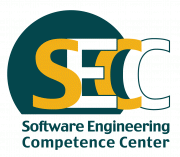Innovation Leadership Needs More than Words

This article was first published on: Innovation Excellence
It’s only words, and words are all I have…….”, is a line from the Bee Gees song “Words” from the 1960s that have been covered many times since. Full disclosure here – I don’t have this song in my collection, only in the recesses of my consciousness.
Last year I helped to run a survey with members of the IACCM (International Association for Contract and Commercial Management). We found that while 73% of organizations represented had innovation as an explicit Top 3 priority, only half of respondents felt that they had C-suite support; with 32% ticking the “don’t know” box.
I’ve heard many war stories about innovation directives being undermined by contradictory messages and actions. To paraphrase – “innovation is our top priority, but we’ll review it next time – I want to know why yesterday’s sales were down by 1%?”. This isn’t to say that the short term is unimportant, that would be crazy, but it doesn’t make sense to extol the virtues of innovation and then undermine its priority with a contradictory message.
Many CEOs exhort their organizations to produce innovation. It’s often under the category of “something must be done”. The illusion of power can lead some to believe they can change events and actions simply through the power of speech. But like most things in business it needs more.
For innovation to really happen after an edict from the top, the senior leadership must introduce a coherent series of actions and commitments which, when implemented, make innovation happen and move beyond just a wish. Some of the important parameters are:
STRUCTURE
Organizational structures are primarily meant to channel workflow and allocate responsibility in the clearest and most efficient way. Innovation starts at a disadvantage as it works laterally across a vertical structure of Sales/Marketing/R&D/Supply etc. That’s why it needs to be organized using a specific cross-functional and cross-category matrix, with clear accountability for decisions and responsibility for delivery.
RESOURCES
Specific resources need to be allocated to innovation, not just in the usual areas of R&D and Marketing, but also in other key areas such as Supply. These resources don’t need to be fully dedicated, but it should be clear to all concerned that the relevant areas of the company need to support innovation projects.
Senior managers must commit people and cash to the cause of innovation. They should also contribute decisiveness and clarity through the structure, ensuring that the right projects are being done in the right way.
EXPECTATIONS
There is no point putting innovation structures and resources in place without setting high expectations for delivery. These must be linked to the corporate strategy, and be stretching and meaningful. High expectations are consistent with high commitment.
The corollary is that achievement of targets, meeting those expectations, should be accompanied by clear recognition and rewards.
CONSISTENCY
The priority given to innovation should be consistent in both words and actions, for example on the agenda of senior executive meetings. The messages sent out from the top must not appear dissonant to the actions of managers anywhere in the chain of command, especially middle managers. These important links in the chain operate “business as usual” (BAU), so well described by Jeffrey Phillips in his book, Relentless Innovation, and it’s up to the senior managers to ensure that innovation becomes a key part of BAU.
In other words, managers must do what they say, otherwise, another line from the Bee Gees song will feature strongly – “you think that I don’t even mean a single word I say”. Don’t let the organization think that.






































































EgyptInnovate site is not responsible for the content of the comments